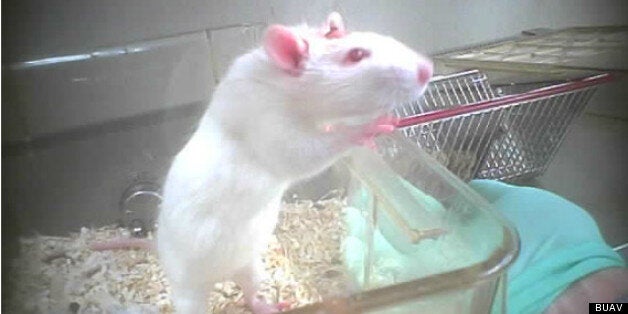
The Government's commitment in 2010 was quite clear: to "work to reduce the use of animals in scientific research". Since then, the number of experiments has risen every year, and the rise is accelerating. This week it was announced that in 2012, over 4.11 million experiments were carried out, with a 9% increase in the number of animals used. Rarely has a broken promise been so directly exposed by reality.
Moreover, this increase includes many of the most controversial types of experiment. For example, there was a 22% increase in the number of experiments carried out on nonhuman primates, and a 22% rise in genetic modification, which involves harmful genes being inserted into animals. Many of these mutant animals do not 'display' the required characteristic and are simply killed without any testing being carried out at all; others are used to conduct speculative research with no direct link to humans. A staggering 425% rise in experiments for nutritional purposes spearheaded the expansion of experiments into areas with even more remote links to serious human disease.
One would expect there to be a decrease in animal experiments in those areas where there are valid alternatives. However, shockingly, the numbers of animals used is still unacceptably high or has even increased. For example, both skin irritation and Draize eye irritation tests were carried out on rabbits during 2012 despite there being a valid alternative. Furthermore, there was a 9% increase in pyrogenicity (fever causing) tests that use rabbits and a 20% increase in controversial acute lethal toxicity tests (mostly carried out to test botulinum toxin, commonly known as botox). Both these types of batch tests have validated non-animal alternatives, but the government is simply not enforcing their use.
In view of the Government's commitment, one might expect that action is being taken to reverse this disturbing trend. Instead, the Government is steadily pulling back from involvement, with the number of Home Office inspectors down to 17.7 full-time equivalents - giving each inspector the impossible task of personally supervising over 200,000 experiments.
So, what does happen in UK laboratories? Despite government rhetoric about the UK having some of the strictest legislation in the world, a recent BUAV investigation revealed shocking evidence of poor practice and high levels of animal suffering inside a laboratory of a world-leading University, Imperial College London. The BUAV exposed a catalogue of shortcomings and wrongdoing by staff and researchers including: breaches in and lack of knowledge of UK Home Office project licences; a failure to provide adequate anaesthesia and pain relief; incompetence and neglect and highly disturbing methods used to kill animals, including decapitation.
The reality is that no serious effort is being made to reverse the rise in animal experiments, even when it uses controversial methods such as the genetic modification of species. The Government would be reflecting public opinion if it at least took action to cut back speculative and non-medical research. Instead, it looks on impotently as the figures spin out of control.
A ministerial statement also published this week, promises announcements in the autumn but given that the number of animals used in research has increased in each of the three years since the Coalition Government took office it may be too little, too late, to achieve the promised reduction before the 2015 General Election.
